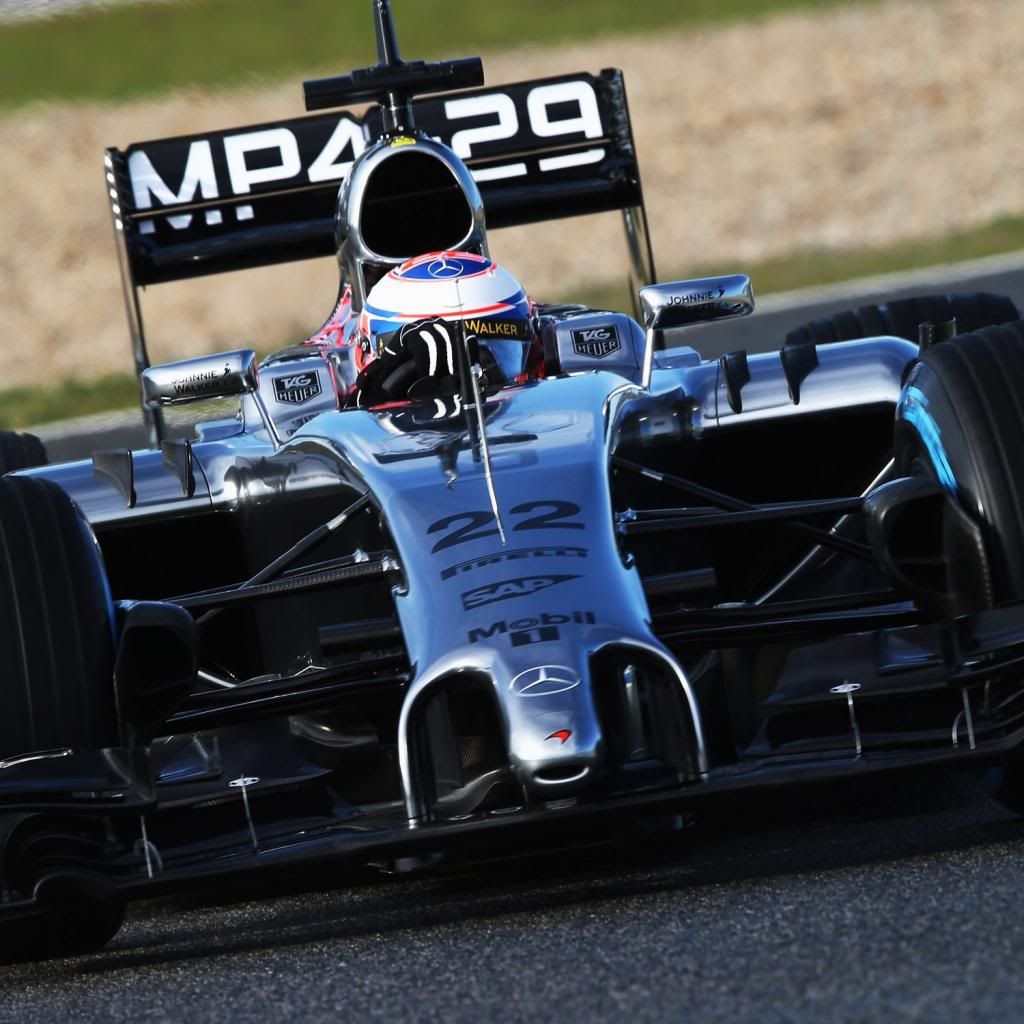Now that is just plain weird. What on earth is going on with those exhausts!? Exiting underneath the gearbox directly into the diffuser?zgred wrote:
- Login or Register
No account yet? Sign up
Now that is just plain weird. What on earth is going on with those exhausts!? Exiting underneath the gearbox directly into the diffuser?zgred wrote:
Where is scarbs when you need him to draw a nice simple diagram of where these are going? {turning on the scarbs-signal, like the bat-signal for Batman}zgred wrote:Image
Coming from pitot tubes I think they are small plastic tubes leading the air pressure back to the transducers.Giblet wrote:Are those wires fibre optic cables?
They do look like them, but usually they are shielded.
Am I missing something here? Most teams seem to have round hole for the starter or sometimes a hole with a sprung flap clearly outlined with bright paint. I see nothing except a slot at the rear.zgred wrote:
I thought that loophole was closed last year.Owen.C93 wrote:McLarens starter equipment just happens to be the same shape as a useful diffuser enhancing slot, nothing to see here
He posted two sketches on his twitter:volarchico wrote:Where is scarbs when you need him to draw a nice simple diagram of where these are going? {turning on the scarbs-signal, like the bat-signal for Batman}zgred wrote:Image
Okay, so A-Level physics doesn't translate that well to analysing F1 car aerodynamics...Remote_Access wrote:Just for your info: the primary mechanism creating lift is not the difference in surface length as you mentioned. That is a common misconception. See: http://en.wikipedia.org/wiki/Lift_%28fo ... ansit-timeadrianjordan wrote:You are correct. In fact if you look at the cross-section of a simple aircraft wing, the top surface will be curved whilst the bottom will be flat. The air travelling over the top has to travel further and so flows at a faster rate. This results in the air pressue above the wing being lower than that below the wing - hence lift. This is basically how aircraft stay in the air.
Actually it's always surprised me that no-one has tried to generate downforce by having a flat top to the sidepod and a curved bottom to them with a gap below to the floor - although I need to look closer at this year's Toro Rosso as perhaps that is what they are doing.
The reason they don't sculpt the sidepods in that way is because the downforce is created by the difference in pressures acting on the highest and lowest points of the car. So whilst an inverted aerofoil may create a low pressure region under the sidepod, it is still above the floor and will pull the floor upwards to cancel itself out.
I believe the "double floor" of the TR, if it's accurate to call it that, is to supply clean air to the rear. One of several options on the grid now.


If it was an A-level in the last 10 years, probably no...adrianjordan wrote:Okay, so A-Level physics doesn't translate that well to analysing F1 car aerodynamics...
I think you're wrong in how this all works. You don't want to accelerate the air to the rear of the car, and nor do the cars do so. My understanding of the physics is that you want as much pressure over the top of the car as possible. With the blown diffusers where the exhausts are used to accelerate the air above the diffuser exit so that it helps draw air out of the diffuser, you are trading a relatively small pressure drop above the floor for a bigger effect under the floor increasing overall effectiveness of the diffuser.segedunum wrote:Accelerating air to the rear of the car is a big requirement for the diffuser especially. That's why we've seen heavily undercut sidepods and and strangely shaped bodywork over the years to accentuate pressure points. Doing all you can to get enough air under at the rear fast enough is the name of the game here. That's what puzzles me a bit about what McLaren are trying - bringing large volumes of air over rather than around and under. I'd expect their inner sidepods to change change fairly frequently in shape over the season rather than the straight arrangement we see now.
Mind you, I wonder if McLaren's low inner sidepods and their jiggery pokery with exhausts is all tied up. They'll want to be using those exhausts and the temperature difference to accelerate the air they've got to the rear and the diffuser.

I think Adrian meant he's currently studying A-level physicsJust_a_fan wrote:If it was an A-level in the last 10 years, probably no...adrianjordan wrote:Okay, so A-Level physics doesn't translate that well to analysing F1 car aerodynamics...
Indeed. Why on Earth anyone should think that two separate paths of air are linked in some way (telepathy perhaps?) I don't know.Remote_Access wrote:Just for your info: the primary mechanism creating lift is not the difference in surface length as you mentioned. That is a common misconception. See: http://en.wikipedia.org/wiki/Lift_%28fo ... ansit-time